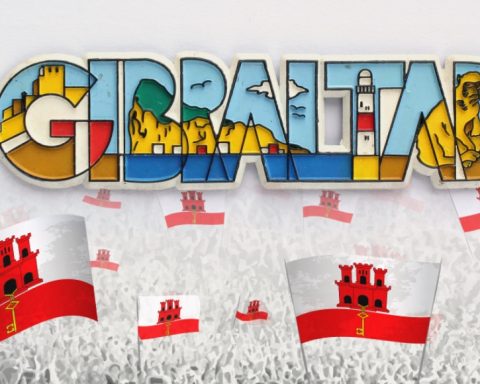There are many famous and ancient traditions associated with Christmas. Undoubtedly, it is some of the key traditions that make Christmas so special.
It is the season to be merry and after an extremely challenging year of physical and emotional issues to deal with, everyone is ready for this festive season. As some families polish their silver tableware ready for the Christmas day feast, villages and cities hang up their festive decorations and open the doors to a season of Christmas shopping and anticipation for Christmas day.
Christmas has a long history but we have the Victorians to thank for many of our most loved festive traditions, including sending cards and decorating Christmas trees. In fact, before the 19th Century, Christmas was barely celebrated in Britain.
Why do we have Christmas trees?
In the UK the Christmas tree was first introduced in 1800 by the wife of King George III, Queen Charlotte, who brought the tradition from her native Germany, where it was common custom to have a Christmas tree in your home Yew. She requested a Yew tree be brought to Queen’s Lodge in Windsor, which she decorated herself.
Why is mistletoe hung at Christmas?
Before it became a romantic symbol, mistletoe was considered so sacred in ancient Britain that it could only be cut by druids with a golden sickle. The plant had connotations of peace, and people who met underneath it were forbidden from fighting, even if they were bitter enemies. Homes decorated with mistletoe offered shelter and protection to anyone who entered.
Even to this day it is very rare to see a sprig of mistletoe inside a church thanks to its Pagan leanings. To the druids of the old religions it was a potent symbol of fertility, and the Greeks and the Romans regularly parleyed peace beneath its boughs. From the Middle Ages our ancestors hung it above the threshold to ward off evil spirits, although the Victorians helped give the plant its modern, lip-smacking tradition. In the UK, the main mistletoe event of the year is the Tenbury Wells Mistletoe Festival in Worcestershire.
How did the Victorians celebrate Christmas?
Much of our understanding of a merrie old English Christmas has more to do with the writings of Charles Dickens or Washington Irving than our real medieval ancestors. For the early Victorians, Christmas was an antiquated curiosity, but one that the English bourgeoisie were beginning to remember. Dickens’s A Christmas Carol is more an idealised romance based on his own childhood memory rather than a chronicle of what was happening at the time. When the Victorians did rediscover Christmas they couldn’t stop themselves and soon we had Christmas cards, crackers and the sense that Christmas was a time for family. And, as Tiny Tim observed: “God bless us, every one.”
Why is turkey eaten on Christmas Day?
In the Victorian era, birds raised in East Anglia were often herded along Drovers’ roads to London to be sold fresh in time for Christmas. Daniel Defoe recorded that 150,000 turkeys were driven from East Anglia to London each year, a journey that took three months to complete. To protect their feet, turkeys were fitted with leather or sacking boots, while geese had theirs tarred and sanded.
In London itself, many working-class citizens banded together to form ‘goose clubs’ as a way to make the Christmas meal more affordable. Each individual paid a few pence a week towards the purchase, which was then shared out between them.
Mince Pies, like Christmas puddings, were originally filled with meat, such as lamb, rather than the dried fruits and spices mix as they are today. They were also first made in an oval shape to represent the manger that Jesus slept in as a baby, with the top representing his swaddling clothes. Sometimes they even had a ‘pastry baby Jesus’ on the top.
Why is holly associated with Christmas?
The barbed leaves and red berries of the holly plant have long been identified with eternal life and protection in Great Britain. At first the Christian church took a disapproving stance to holly, forbidding it from appearing in churches, but the spiky leaves still appeared in people’s houses, as the red of the berries was thought to ward off witches. In the face of such popularity, the custom was sanctified, the leaves taken to represent Christ’s crown of thorns, and the berries His blood. Of course, special care had to be taken with such a powerful and lucky plant and so the old decorations, which were traditionally taken down on Candlemas (2 February), were never thrown away, but burnt.
Where did Christmas Crackers originate from?
Christmas crackers are a traditional Christmas favourite in the UK. They were first made in about 1845-1850 by a London sweet maker called Tom Smith. He had seen the French ‘bon bon’ sweets (almonds wrapped in pretty paper) on a visit to Paris in 1840. He came back to London and tried selling sweets like that in England and also included a small motto or riddle in with the sweet. However, they didn’t sell very well. In 1861 Tom Smith launched his new range of what he called ‘Bangs of Expectation’
Legend says that, one night, while he was sitting in front of his log fire, he became very interested by the sparks and cracks coming from the fire. Suddenly, he thought what a fun idea it would be, if his sweets and toys could be opened with a crack when their fancy wrappers were pulled in half.
Why do we celebrate Boxing Day?
Celebrating the 26th December began sometime in the 1800s when Christmas gifts were received by the in a ‘Christmas box’. The following day, wealthier classes would fill the box with gifts to give to the poor – often servants and staff from their home who would traditionally be given Boxing Day off as a holiday. Alternatively, the box would be donated to a local church to help poorer people.
The feast of St Stephen is now known as Boxing Day thanks to the tradition of tradesmen calling on anyone who had employed them in the previous year to collect a monetary gift placed in special Christmas boxes.
Whether traditions are steeped in history or ones we create ourselves, there is something wonderfully comforting and nostalgic about our beloved customs and shared beliefs over Christmas.








